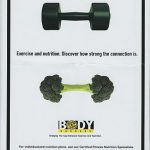Traditional interviewing doesn’t work for wellness businesses. Yet turnover’s hugely expensive—so you need to get hiring right the first time. Here’s how.
Staff turnover is expensive. In a 50-person organization with 30% turnover and an average salary of $50,000, the annual cost of staff turnover is at least $100,000. That’s the equivalent of two extra employees!
If traditional interviewing processes worked, your staff turnover wouldn’t be so high. And haven’t you secretly wondered why hiring managers always ask dumb, obvious questions like “What are your top strengths and weaknesses?” or “Why do you want to work for us?”
After all, who’ll tell you that their strength is talking on the phone with friends and their weakness is coming in late most days? Is anyone going to admit that the biggest attraction is the fact that you’re only three blocks from their favorite Starbucks?
The truth is that traditional interviewing doesn’t work very well. Average staff turnover is 50% or more in many wellness businesse—so we’re clearly not doing a good job of matching candidates and jobs. And each time you lose an employee it costs your business literally thousands of dollars in hiring, training, and reduced efficiency.
Simple-to-use behavioral interviewing techniques help you and the job candidate increase the likelihood of a great match between the job requirements and the candidate’s capabilities.
What is behavioral interviewing?
Behavioral interviewing asks candidates to show you how they would apply their past performance, job skills and life experiences to the most likely challenges they’ll face in the role you’re hiring for.
What’s less important: current and past formal titles, credentials like degrees and licenses, “strengths and weaknesses,” or career ambitions.
What are the advantages of behavioral interviewing?
Behavioral interviewing techniques help you pick new employees based on their demonstrated success in tackling situations required by the position you’re filling.
Human resources specialists report that behavioral interviewing accurately predicts on-the-job behavior over 50% of the time.
Compare that impressive statistic to traditional interviewing, which gets it right just 10% of the time. Yet correctly predicting how your employees will handle their key responsibilities is critical in hiring (and keeping) the right people.
Its structured, objective and consistent process helps reduce unconscious bias and is often more legally defensible. Of course, we also suggest consulting an attorney to ensure that your staff is up to date on interviewing and hiring do’s & don’ts.
How does behavioral interviewing differ?
Improving staff retention and reducing turnover depends on better employer decisions AND better candidate decisions. An effective interview gives employers and job candidates information about the potential fit.
Traditional interviewing’s emphasis on education, strengths and weaknesses, and career goals doesn’t help the employer or the job candidate. Sure, these factors matter. But an interview that dwells exclusively on these areas leaves a lot unknown.
First, these factors don’t tell you much about the candidate’s capability for the position you’re filling. For example, if you’re hiring a shift manager and your wellness center deals with lots of kids, you might need to know more about how this candidate handles pushy parents. That’s far more important than knowing, say, that the candidate wants to start his own business some day. or quizzing him about the details of a particular strength training protocol.
Second, focusing on these areas doesn’t tell the candidate much about the real requirements of the position. Candidates don’t want jobs they’ll dislike. If they have no experience with pushy parents and dread the idea, you want them to be fully aware so that they can avoid a bad decision as well.
How can I start using behavioral interviewing?
1) Identify the most important requirements for the job—typically five or so.
Remember, “five years of experience” is not a well-defined job requirement.
A well-defined job requirement looks more like this: “Must know how to do “X” under “Y” conditions and deal with “Z” exceptions and special issues.”
2) For each requirement, identify how you can best assess candidates’ capabilities.
In other words, how will you be able to tell if they have each capability?
3) Make a checklist of the requirements and the related assessments you identified.
Then, review the questions you’ve used in the past. Are there any that deserve to be included? Are there any that are just “the way we’ve always done it?” that can be dropped?
4) Follow the checklist consistently as you interview each job candidate.
5) Periodically refine and update the checklist based on how well your actual hires do, and their feedback on the skills and know-how they actually needed to be successful.
Behavioral interviewing in action
For wellness businesses, the three most effective assessments for job candidates are usually:
- Written tests
- Targeted interview questions
- Demonstrations of expertise
|
Written Tests |
Interview Questions |
Demonstrations |
|
| Examples |
Have nutritionists actually calculate caloric needs based on a sample client profile
*** Have personal trainers develop a proposed workout routine based on a sample client
*** Have acupuncturists or massage therapists write down the steps to properly sanitize equipment
|
Ask sales managers to explain how they’ve handled prior sales shortfalls
*** Ask wellness coaches to tell you how they worked with an especially reluctant client
*** Have billing clerks tell you about the worst customer experience they’ve had and how they handled it |
Ask yoga instructors to show you how they would instruct a class to properly perform downward dog
*** Have a nurse-practitioner deliver a sample presentation on wellness during pregnancy
*** Have fitness instructors show you how they would modify a class for overweight attendees |
| Avoid |
Written tests that aren’t important for the job.
For example, typing accuracy isn’t a key job requirement for personal trainers.
But you do want to verify that they can read and evaluate a PAR-Q accurately.
|
Questions that don’t address key job skills.
For example, asking about college activities doesn’t tell you much.
Asking how they’ve modified exercise routines for people with joint problems is more meaningful. |
Demonstrations that don’t match major responsibilities of the position.
For example, how a fitness director for a large center would teach a spinning class is probably not essential.
But asking them to role-play coaching a tardy employee might provide great insights. |
You’ll probably use several techniques to assess how well candidates meet each job requirement.
For example, if you’re hiring a physical therapist to work with overweight clients and a key job requirement is excellent client communication, you could:
- give them a case study and ask them to write an exercise prescription to be given to the sample client
- ask them to describe a situation in which they had to find a way to help an overweight client overcome previous unpleasant experiences with exercise
- have them demonstrate how they would explain a specific exercise to obese clients who might not be able to detect typical cues like tightening certain muscles.




